Asia
About Andrew Cusack
 Writer, web designer, etc.; born in New York; educated in Argentina, Scotland, and South Africa; now based in London.
Writer, web designer, etc.; born in New York; educated in Argentina, Scotland, and South Africa; now based in London. read more
News
Blogs
Reviews & Periodicals
Arts & Design
World
France
Mitteleuropa
Knickerbockers
Argentina
The Levant
Africa
Cape of Good Hope
Netherlands
Scandinavia
Québec
India
Muscovy
Germany
Academica
The Situation in the Far East
A century-old geopolitical cartoon is updated for today
Tse Tsan-tai — or 謝纘泰 if you fancy — was by any standard a remarkable man. Born in New South Wales, this Chinese-Australian Christian was a colonial bureaucrat, nationalist revolutionary, constitutional monarchist, pioneer of airship theory, and co-founded the South China Morning Post — still one of the most prominent newspapers in the Orient.
Tse’s most important visual contribution was a widely distributed political cartoon usually known in English as ‘The Situation in the Far East’ or in Chinese as the ‘Picture of Current Times’ (below).
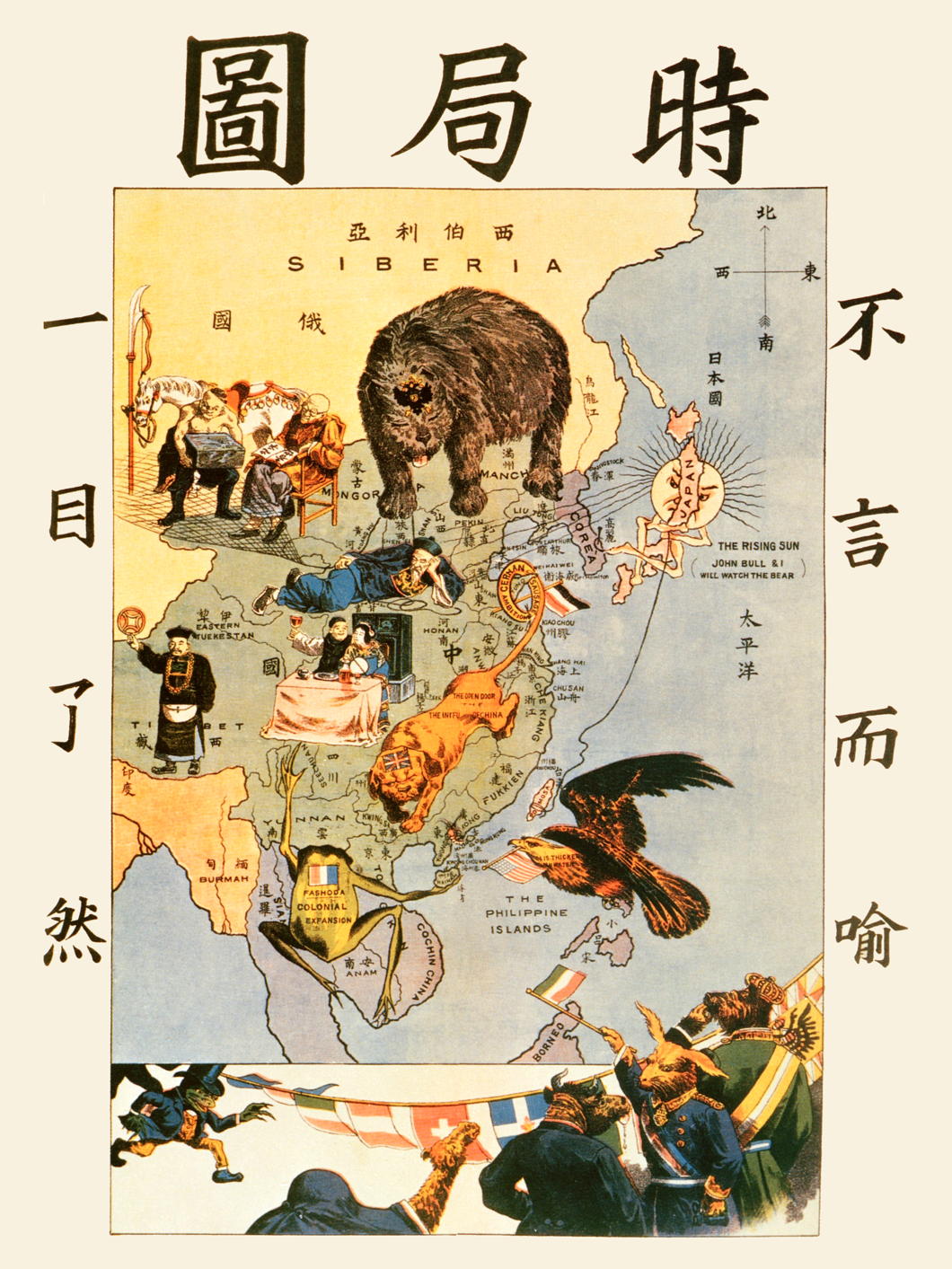
Crafted as a propaganda measure to warn his fellow Chinese of the designs of foreign powers, the cartoon depicts the perils facing the Middle Kingdom.
Japan, with its expanding navy, proclaims it will watch the seas with its ally, Great Britain. The Russian bear looms from Siberia, crossing the border into China. A British lion sprawls over the land, its tail tied up by the “German Sausage Ambitions” at Tsingtao. The French frog guards Indochina while the American eagle lurks from the Philippines.
Meanwhile, the Chinese figures show sleeping bureaucrats and carousing intelligentsia unresponsive to the external threats.
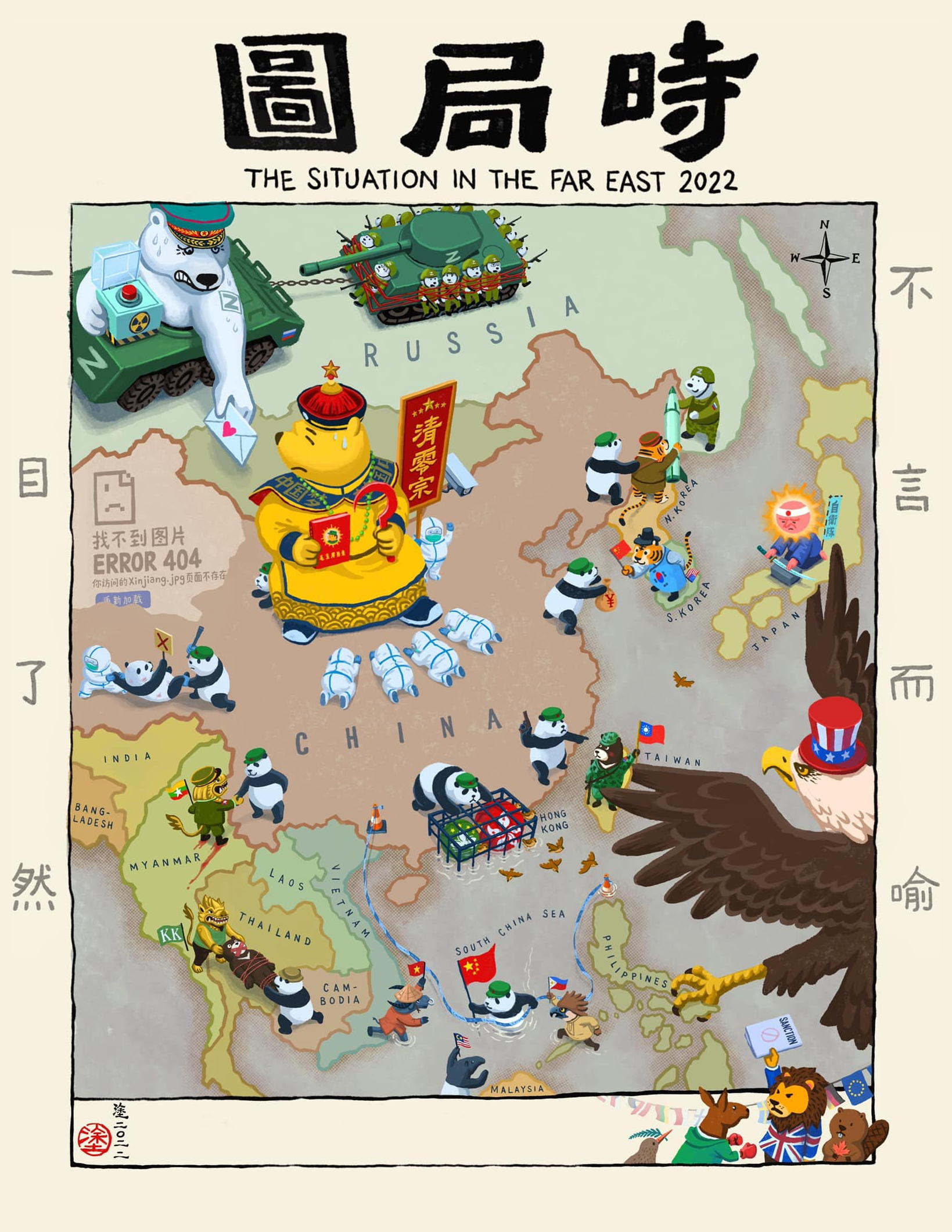
Now the exiled Hong Kong artist Ah To (阿塗) has updated ‘Situation’ to reflect the realities of 2022. (more…)
In the Old Dutch East Indies
Little Holland’s rule over this vast land – today the world’s largest Muslim country by population – never loomed large in the European imagination (the Netherlands excepted) and thus has been too easily forgotten. Peter van Dongen’s Rampokan series of graphic novels (in Herge’s ligne-claire style) is the most prominent recent attempt to shine some light on the Dutch East Indies and it has obtained a bit of a cult following.
The colonial architecture went through the usual transformations, from awkward hybrids of the motherland and the vernacular to a cool and crisp classical elegance of the later imperial buildings. Henri Maclaine Pont’s work at Bandung is probably the most successful Dutch take on local building traditions, and in some ways Geoffrey Bawa is his spiritual offspring.
The ministries of Indonesia’s government still convene in elegant Dutch colonial buildings, though the names have all changed. The Daendels Palace is now the Finance Ministry, Buitenzorg is now Bogor, and the old Koningsplein is now the Medan Merdeka or Freedom Square. (more…)
Burma’s New Flag
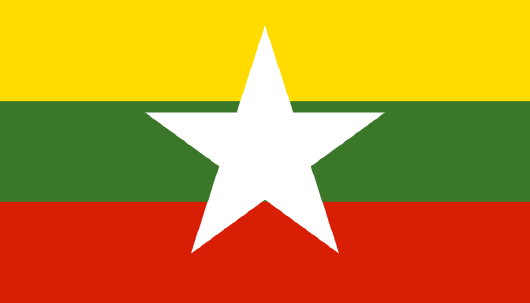
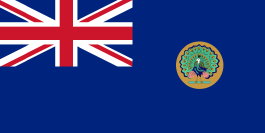
Burma Colony (1937–1948)
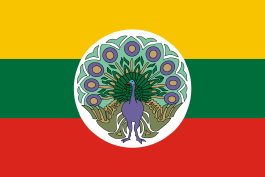
State of Burma (1943–1945)
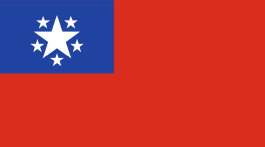
Union of Burma (1948–1974)
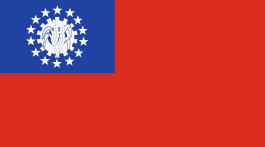
Socialist Republic of the Union of Burma (1974–1988) and Union of Myanmar (1988–2010)
The military government of Burma (officially ‘Myanmar’) unveiled a new flag for the southeast-Asian country last week. The new design (above) rejects the general form of Burmese national flags since the country was granted independence from Great Britain in 1948, but instead harkens back to the ‘State of Burma’, a puppet regime set up by the Japanese to integrate Burma into their ‘Greater East Asia Co-Prosperity Sphere’.
Somewhat paradoxically, the Minister of Defence in the puppet ‘State of Burma’ was General Aung Sang, the father of Aung Sang Suu Kyi, pro-democracy activist and winner of the Nobel Peace Prize. Aung Sang Suu Kyi is the most prominent leader of the opposition to the military junta that rules Burma, and has spent fourteen of the past twenty years either in jail or under house arrest.
The flag change is part of a transition period devised by the military junta in their attempt to reform the country into a managed democracy that will be less isolated from the rest of the world without threatening the junta’s grasp on power.
Burma became a British possession in 1824, and was made a province of the Empire of India in 1886. In 1937 the province was separated from India, excluding it from the reforms aimed at eventually granting dominion status to the sub-continent but also introducing important reforms for Burma, including an elected assembly with a prime minister. The country saw some of the heaviest fighting during the Second World War, but the forces of the Japanese puppet regime, the ‘State of Burma’ eventually saw the tide turning against the Empire of Japan and switched sides to join the British and Indian armies under Lord Mountbatten.
Search
Instagram: @andcusack
Click here for my Instagram photos.Most Recent Posts
- Burns Tower April 19, 2024
- Patrick in Parliament March 18, 2024
- Articles of Note: 13 March 2024 March 13, 2024
- Cambridge March 9, 2024
- Taken on Trust March 4, 2024
Most Recent Comments
Book Wishlist
Monthly Archives
Categories


